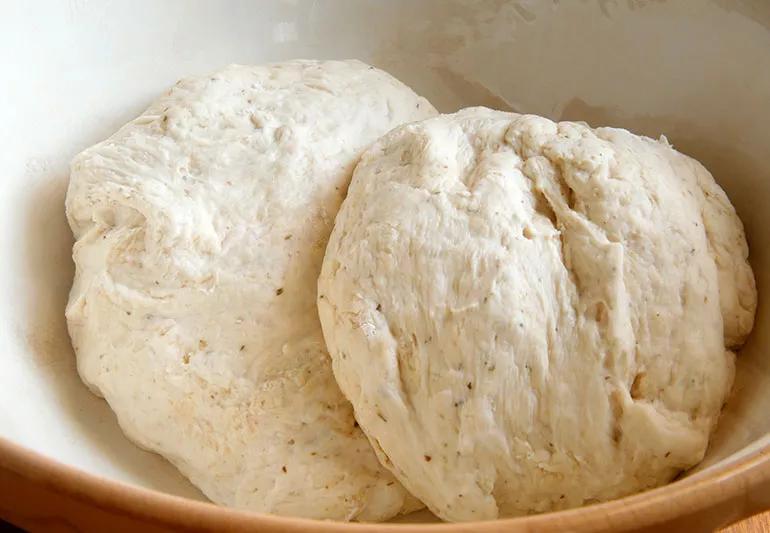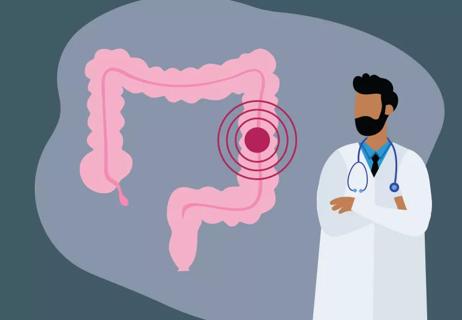The symptoms are similar, but the conditions are very different

If you feel unwell (or horrible) after eating wheat or gluten, you’re not alone. Three different conditions — celiac disease, non-celiac gluten sensitivity (NCGS) and wheat allergy — can cause problems when you eat these foods. And together, these three conditions affect millions of people in the U.S and around the world.
Advertisement
Cleveland Clinic is a non-profit academic medical center. Advertising on our site helps support our mission. We do not endorse non-Cleveland Clinic products or services. Policy
So, what’s the difference between celiac disease, NCGS and wheat allergy — and what should you do if you think you have one of these conditions? Gastroenterologist Alberto Rubio Tapia, MD, clears up the confusion.
The quick definitions:
Celiac disease and NCGS, also called gluten intolerance or gluten sensitivity, seem similar on the surface. Both conditions can cause uncomfortable symptoms after you eat gluten. But that’s where the similarities end, says Dr. Rubio Tapia.
“Celiac disease is an immune system disorder that damages your small intestine when you eat even a tiny amount of gluten. Celiac also runs in families,” explains Dr. Rubio Tapia. “NCGS is a digestive disorder, not an immune system problem. NCGS doesn’t damage your intestine, and it doesn’t run in families.”
If they’re so different, why do people confuse celiac disease and NCGS (gluten intolerance)? Because they have two things in common:
Advertisement
So, if you have celiac or NCGS, you might notice that eating gluten causes:
Despite their overlap in symptoms, how bad you feel isn’t an indicator of what’s ailing you. “Some people with celiac have no symptoms at all,” notes Dr. Rubio Tapia. “And a person with NCGS could have very severe symptoms after eating gluten. We have to do tests to find out what’s going on.”
Things get more complicated with NCGS (gluten intolerance). Recent research suggests that NCGS may not be a reaction to gluten at all. What we call “NCGS” could be a reaction to something else in the most common grains we eat.
“We know that the symptoms of NCGS are very real,” says Dr. Rubio Tapia. “People with this condition are sensitive to something in certain grains, but it might not be gluten. Studies haven’t been able to pinpoint gluten as the offender in people with NCGS.”
Dr. Rubio Tapia says some studies are looking at amylase/trypsin-inhibitors (ATIs) as a trigger for NCGS. Like gluten, ATIs are proteins in wheat, barley and rye. And they might be the reason people feel like gluten is the root of their health problems.
“ATIs could be causing symptoms in people with NCGS, but we need more studies to find out,” says Dr. Rubio Tapia. “We know that people with NCGS get relief when they stop eating gluten. But when you go gluten-free, you’re also going ATI-free because these two proteins are in the same foods.”
“A mild wheat allergy could look like celiac or NCGS,” says Dr. Rubio Tapia. “But if you have a wheat allergy, you need to avoid wheat completely because allergic reactions can be dangerous. It’s important to get a diagnosis — don’t just assume you have gluten intolerance.”
Allergies happen when your immune system attacks something that’s usually harmless. If you have a wheat allergy, you’ll have a reaction anytime you eat something with wheat — even a tiny amount. People with severe allergies react to inhaling or smelling wheat, even if they don’t eat it. (This type of reaction won’t happen if you have NCGS or celiac disease.)
If you have a wheat allergy and eat something with wheat in it, you may experience:
Advertisement
Wheat allergy and celiac disease have a few things in common. They both involve an immune system reaction. And both can run in families. You have a higher risk of having a wheat allergy if you have a close family member with allergies, asthma or eczema.
In some cases, the symptoms can look similar, too. And you have to completely avoid the offending food, whether it’s wheat or gluten.
There is a key difference, though. Almost two-thirds of people with a wheat allergy outgrow it by age 12, according to the American College of Allergy, Asthma & Immunology. People with celiac disease don’t outgrow it.
Wheat allergy and NCGS can have some similar symptoms, such as nausea. But they’re not related — not even distant cousins.
“NCGS can cause painful symptoms, but the condition has nothing to do with allergies,” states Dr. Rubio Tapia. “Allergic reactions can be life-threatening, and NCGS isn’t. But NCGS can affect your quality of life.”
There are plenty of gluten-free foods available in stores today. Should you just stop eating gluten and not worry about which condition you have? No. If you go gluten-free before getting medical tests, your results won’t be accurate.
“Tests for celiac disease only work if you’ve been eating gluten,” explains Dr. Rubio Tapia. “That’s why you should not self-diagnose and just go gluten-free. See your provider first and have tests done before eliminating any foods from your diet.”
Advertisement
If your provider thinks you could have celiac disease, they may recommend:
It’s normal to feel a little shocked or even upset if you’re diagnosed with celiac disease. There are resources available to help you follow a gluten-free lifestyle and, with guidance from your provider, you can learn how to find hidden gluten and which foods are best for you.
Usually, a diagnosis of NCGS requires two things:
Advertisement
“There’s no blood test that can confirm NCGS,” says Dr. Rubio Tapia. “So, we diagnose NCGS when we rule out celiac disease and allergy. It’s important to get tested because celiac disease can cause long-term damage to your intestines. We need to know if you have celiac, so you can strictly avoid gluten and stay healthy.”
Food allergies are your immune system’s reaction to certain proteins. People can be allergic to the proteins in wheat, barley or rye — or many other foods. If your provider thinks you could have a wheat or grain allergy, they may do:
If you or your child has a wheat allergy, avoiding all wheat is important. Your provider may recommend seeing a nutritionist to talk about diet changes that will keep you or your child safe.
If you learn you have NCGS, you might wonder if celiac disease is waiting in the wings. But there’s no evidence to support that the two are related.
“People with NCGS do not have a higher risk of celiac disease,” says Dr. Rubio Tapia. “It’s natural to worry about this because the two seem like similar conditions. But they’re not connected at all.”
Some athletes and celebrities sing the praises of gluten-free diets. But can you boost your health by skipping gluten?
“There’s no benefit to a gluten-free diet unless you have a medical condition that requires it,” states Dr. Rubio Tapia. “Avoiding gluten when you don’t have an allergy, celiac disease or NCGS can harm your health. And there’s no evidence that eating gluten will trigger celiac disease in people without a family history of it.”
If you go gluten-free without a medical reason, you risk:
See your provider if you have:
It can be hard to live with a condition that strictly forbids gluten. You may have to seek out foods that won’t make you sick at restaurants, parties and family gatherings. Additionally, many people don’t understand these conditions and dismiss them as “not that serious.”
Reach out to your provider if you find that living with celiac disease, NCGS or a wheat allergy is affecting your physical or mental health. Your provider is your healthcare partner, here to help you feel your best. They can guide you through ways to manage your condition and find support groups, where you can connect with others who understand.
You can live a full, active — and delicious — life, even without gluten.
Learn more about our editorial process.
Advertisement

It’s more than just avoiding gluten — it’s also important to focus on your mental and emotional health

Discover the connection between eating gluten and developing celiac disease

The short answer from a gastroenterologist

Relatives are more at-risk

CHANGE ADDED NOW Lorem ipsum dolor sit amet. Non voluptatem quibusdam qui nobis laborum in animi autem est veritatis temporibus quo impedit eius. Quo possimus quaerat sit odio omnis est commodi consequatur vel assumenda itaque. I ADDED THIS JUST NOW CHANGE

More than 90% of allergic reactions can be linked to these foods

It’s likely a short-term sensitivity (not an allergy) to acidic foods

Symptoms can be similar, but affect your body in distinct ways

Type 2 diabetes isn’t inevitable with these dietary changes

Applying a hot or cold compress can help with pain